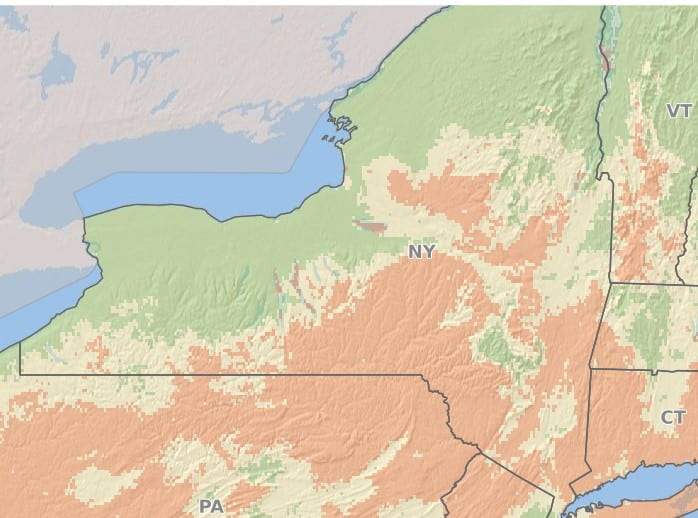Black Cutworm Feeding Observed, More Still Arriving
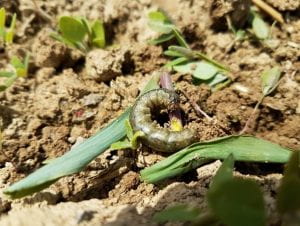
Black Cutworm (BCW) catches continue to be high in Wyoming, Livingston and Orleans counties. All locations will be over the 300 DD for the May 9, 16 and 23 flights by Saturday so there are plenty of hungry BCW larvae out there. All corn needs to be scouted. Corn is not safe from BCW until the V6 stage (6 collars visible) when it becomes too big to cut. I have continued to hear of a few more fields that were over the threshold for BCW injury.
Remember, if 3 to 5% of the plants are missing or cut, spraying an insecticide is warranted. As a reminder, The NWNY team has a good video on how to scout for BCW damage and find the culprit.
Common armyworm continues to be a no-show in the traps and in the field. Keep looking for blackbirds diving into the wheat and CAW crossing the road.
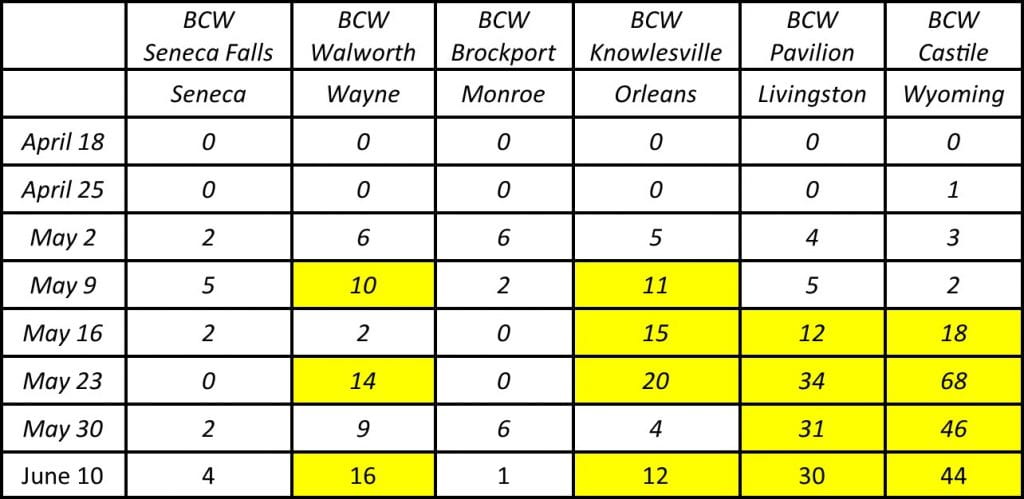
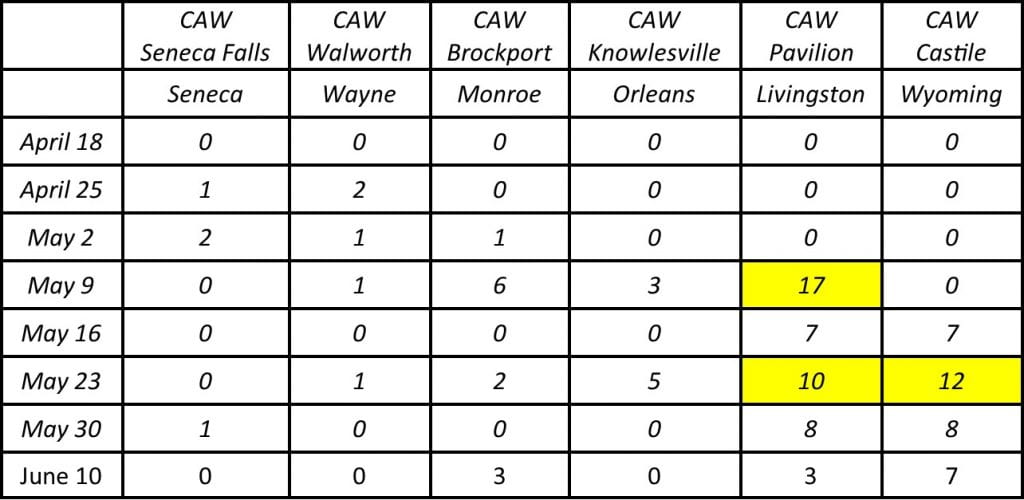
- Plant cutting around 300 Degree Days
- Degree Day data from Network for Environment and Weather Applications, NEWA
Potato Leafhoppers (PLH) have Arrived
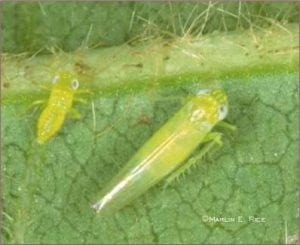
PLH are back from their overwintering sites down south. They come up on storm fronts and get dropped out usually with the rain. The adults will feed and lay eggs into alfalfa plants. My extension colleagues across the state have been reporting finding low numbers of PLH this week. Second cut regrowth and new seedings are the most vulnerable. PLH feed by piercing and sucking the plant sap from the plant. The resulting hopper burn (yellow leaves) and stunting means that we missed our opportunity for timely management.
PLH management is based of plant height and leafhoppers per sweep. Cornell recommends taking five sets of sweeps with a sweep net (10 sweeps per set) per field and calculating a PLH (adults & nymphs, see picture) per sweep for each set. The economic thresholds for PLH are listed below. Many NY growers are now utilizing PLH resistant alfalfa varieties to protect against quality and quantity losses. Many university researchers are recommending increasing PLH regular thresholds by 3X. However, use regular threshold numbers (chart) for first year PLH resistant stands. After the first cut, use the 3X numbers.

Watch for Crown Rust in Oats
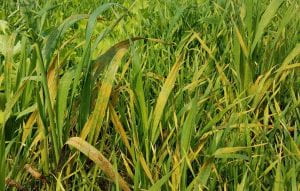
I have heard from a couple folks that CLB were easy to find while scouting oats this week. While you are out scouting, keep an eye out for crown rust. Weather conditions have been good for spore movement to oats. It has been bad the last couple of years and it can take down a field quickly. Cornell has recommended the variety Hayden due to its resistance to rust and many of you have it planted. Look for the orange color on the leaves. It will wipe off on your pants and boots and will be easy to see. If you have it, it would be advised to spray the field with a labeled fungicide.
Wheat: Fusarium Head Blight Risk
Most of our wheat has pollinated and looks great! Many farms sprayed at flowering to help suppress Fusarium head blight (FHB). The risk of FHB infection is high (red color) in a large area of New York over the last few days and remains elevated. Most of our counties in NWNY are still showing low risk (green). Let’s hope this holds true. I am looking forward to some great wheat yields. Check out the online Fusarium Risk Assessment Tool.
